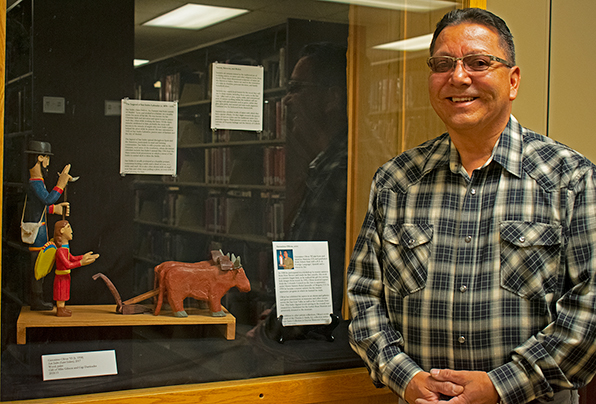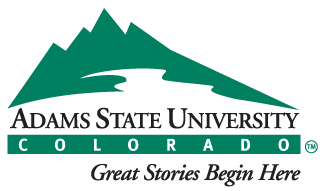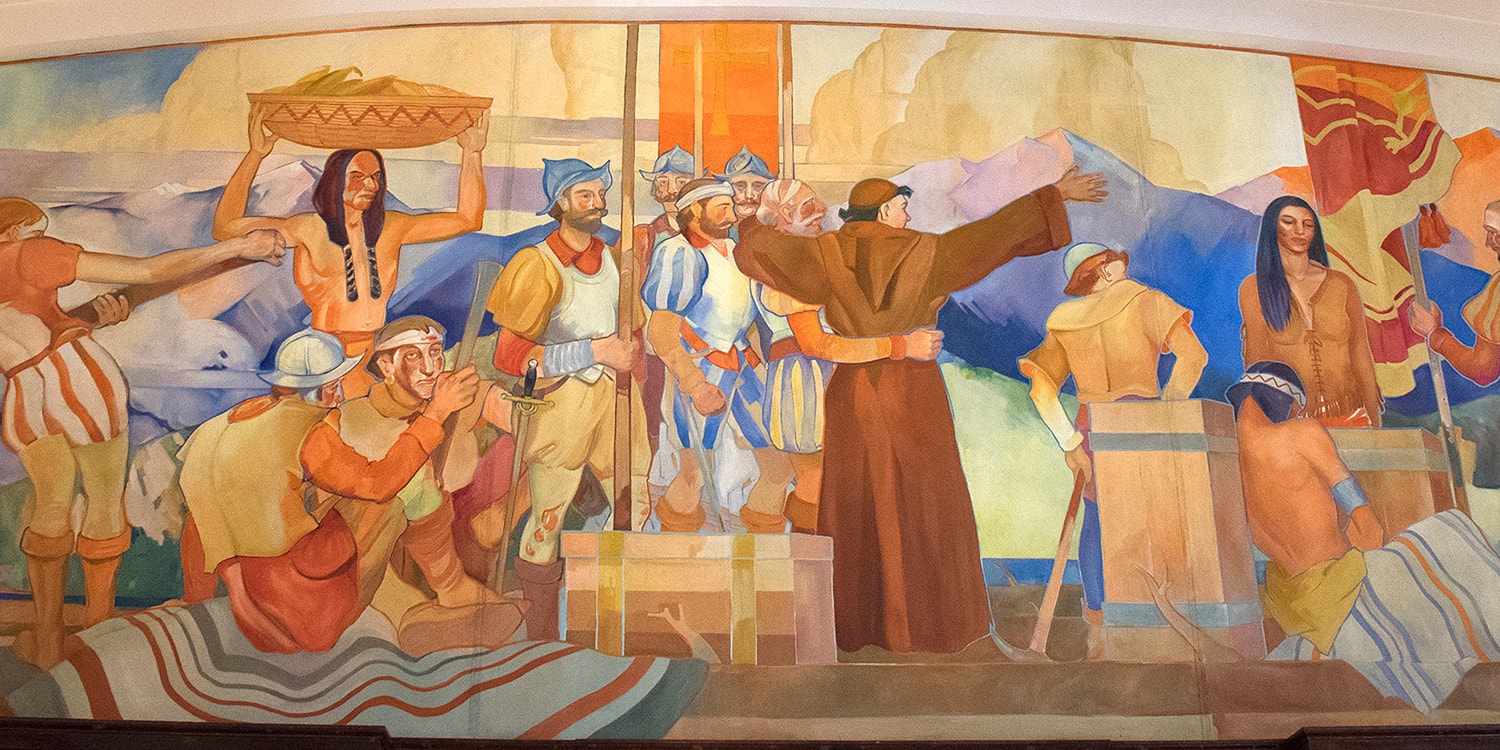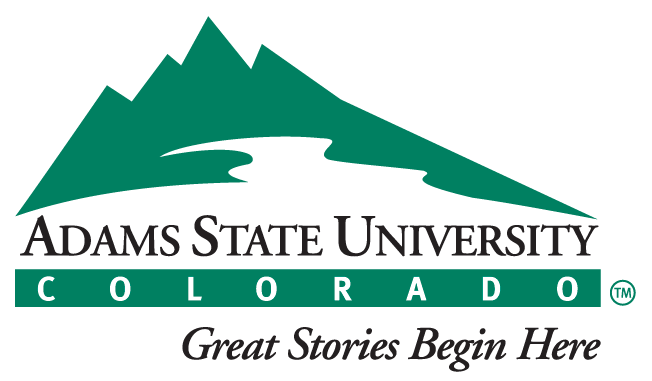Located in the rural San Luis Valley surrounded by agriculture, it seems fitting the patron saint of farmers should have a space at Adams State University. Now, thanks to a generous donation by Mike Gibson and Gigi Darricades, a carving of San Isidro Labrador by Master Santero Geronimo Olivas will be on display for all to enjoy the traditional Spanish Colonial art form.
“We appreciated the opportunity to help preserve and promote the local arts and culture as well as support the Adams State Luther Bean Museum,” Gibson said.
Olivas, Adams State Class of ’93, donated the piece for the ASU Salazar Rio Grande del Norte Center fundraiser in the summer of 2017, where Darricades and Gibson purchased the carving.
“As an alumnus of Adams State, I believe in supporting the institution whenever possible,” Olivas said. “Mike and Gigi demonstrated their philanthropy when they bought the Santo at the Salazar Center fundraiser. Now, to give back again, is so generous. It is an honor to have the carving of San Isidro Labrador on display at Adams State.”
During the Salazar Center fundraiser, Olivas presented the history and techniques of his artwork. “What struck us the most was the carving represents the patron saint of farmers and agriculture,” Gibson said. “We are both very interested in agriculture, as it is the main industry here and the focal point of our community.”
The current Salazar Center intern, Patricia Rodriguez designed the display and interpretive signage for the San Isidro Labrador bulto, currently on display outside the Cooper Room in the Nielsen Library. According to Tawney Becker, Luther Bean Museum collections manager, the Luther Bean Museum Advisory Committee agreed to temporarily displaying the carving in the library, thereby bringing attention to the Luther Bean Museum and offering a broader audience the opportunity to view the carving.

“The San Isidro Labrador bulto is a very compelling piece of art,” Gibson added. “We wanted it displayed in a manner for many to enjoy and appreciate as it is very appropriate for the San Luis Valley’s agricultural heritage.”
Since moving to the San Luis Valley, Gibson and Darricades have become involved with the San Luis Valley’s agriculture community due to Gibson’s work with The Nature Conservancy at the Medano-Zapata Ranch and Darricades’s legal work with the Rio Grande Headwaters Land Trust where she worked with farmers and ranchers.
San Isidro was born outside of Madrid, Spain and worked as a farmer on a wealthy estate for most of his life. He was known for his Christian faith and devotion and spent hours in prayer each day, often while working the farm. Of the many miracles attributed to him, probably the most well-know is the miracle of angels who took Isidro’s place behind the plow while he prayed. He was canonized in 1622 at San Isidro Labrador, patron saint of farmers and the city of Madrid. San Isidro is usually portrayed as a humble peasant sometimes holding a sickle and a sheaf of corn, or a sickle and staff. He is also often shown with an angel near him and white oxen pulling a plow, or even with an angel plowing for him.
Olivas’ art has been shown in numerous gallery exhibitions, and presentations throughout Colorado. Some of his santos are part of the permanent collection of Tomas J. Steele, S.J. “The Regis Collection of Santos” Dayton Memorial Library Regis College and private collections of Bishop Arthur N. Tafoya and Fr. Patrick Valdez. His unique style derives from research of traditional santos of Colorado and Northern New Mexico and centers around Hispanic heritage; particularly the Morada de Nuestro Padre Jesus in Lobatos, Colorado and history of Catholic saints.



